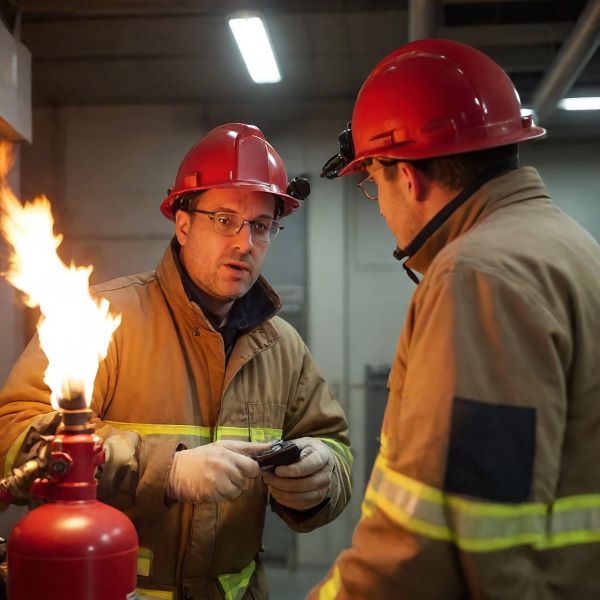 Infographics for Backlinks – Visual Goldmines for Authority Sites!
Infographics for Backlinks – Visual Goldmines for Authority Sites!
Importance of Fire Safety Training in the Workplace
Written by Elixir Engineering » Updated on: June 17th, 2025

Fire safety is a critical aspect of workplace safety that cannot be overlooked. Ensuring that employees are well-prepared to respond effectively to a fire emergency can mean the difference between a minor incident and a catastrophic event. This is where fire safety training plays a vital role. By equipping employees with the knowledge and skills to handle fire-related emergencies, businesses can protect lives, minimize property damage, and ensure compliance with safety regulations.
Understanding Fire Safety Training
Fire safety training involves educating employees about fire hazards, prevention methods, and emergency response procedures. It covers everything from identifying potential fire risks in the workplace to using fire extinguishers and evacuating the premises safely. The training typically includes both theoretical knowledge and practical exercises, ensuring that employees are not only informed but also confident in their ability to act in an emergency.
Why Fire Safety Training is Essential
1. Protecting Lives
The primary purpose of fire safety training is to protect lives. In the event of a fire, knowing what to do can save lives. Employees who have undergone fire safety training are more likely to remain calm and take appropriate actions, such as raising the alarm, using fire extinguishers correctly, and guiding others to safety. This knowledge is crucial in preventing injuries and fatalities during a fire emergency.
2. Minimizing Property Damage
Fires can cause extensive damage to property, leading to significant financial losses for businesses. However, with proper fire fighting training, employees can take swift action to control or extinguish small fires before they escalate. This can prevent the fire from spreading and causing more severe damage. Additionally, trained employees can follow proper evacuation procedures, ensuring that valuable assets are protected during an emergency.

3. Ensuring Regulatory Compliance
Most countries have strict regulations regarding workplace fire safety. These regulations often require businesses to provide fire safety training for employees. Failure to comply with these regulations can result in hefty fines, legal liabilities, and even the closure of the business. By investing in fire safety training, companies can ensure they meet legal requirements and avoid potential penalties.
4. Promoting a Safety Culture
Providing fire safety training for employees sends a clear message that the company values their safety and well-being. This commitment to safety helps foster a positive workplace culture where employees feel valued and protected. When safety is prioritized, employees are more likely to be engaged and productive, leading to a better overall work environment.
Key Components of Fire Safety Training
Effective fire safety training should cover several key areas to ensure employees are well-prepared for a fire emergency. These include:
1. Understanding Fire Hazards
Employees should be educated about the common fire hazards in their workplace. This includes identifying potential sources of ignition, such as faulty electrical equipment, flammable materials, and improper storage practices. Understanding these hazards allows employees to take preventive measures to reduce the risk of fire.
2. Fire Prevention Strategies
Preventing fires is the first line of defense in workplace safety. Training should include fire prevention strategies, such as proper handling and storage of flammable materials, regular maintenance of electrical equipment, and adherence to fire safety protocols. Employees should also be encouraged to report any potential fire hazards to their supervisors.
3. Emergency Evacuation Procedures
In the event of a fire, a quick and orderly evacuation is essential. Employees should be familiar with the evacuation routes, assembly points, and the proper procedures for exiting the building. Training should also include instructions on assisting individuals with disabilities and ensuring that everyone is accounted for after evacuation.
4. Using Fire Extinguishers
Not all fires can be extinguished with a fire extinguisher, but when they can, it's important that employees know how to use them correctly. Fire fighting training should include hands-on practice with fire extinguishers, covering the different types of extinguishers and their appropriate uses. Employees should learn the PASS technique (Pull, Aim, Squeeze, Sweep) for effectively using a fire extinguisher.
5. Communication During an Emergency
Effective communication is crucial during a fire emergency. Employees should be trained on how to raise the alarm, notify emergency services, and communicate with their colleagues during an evacuation. This ensures that everyone is informed and can take the necessary actions to stay safe.
6. First Aid and Emergency Response
In addition to fire safety training, employees should also receive basic first aid training. This can include treating burns, smoke inhalation, and other injuries that may occur during a fire. Being able to provide immediate assistance can significantly improve the chances of recovery for those affected by the fire.
The Role of Fire Safety Drills
Regular fire safety drills are an essential part of fire safety training for employees. These drills allow employees to practice what they have learned in a controlled environment. By simulating a fire emergency, employees can become more familiar with the evacuation procedures and develop the confidence to respond effectively in a real-life situation.
Fire drills also provide an opportunity for the company to identify any weaknesses in their fire safety plan and make necessary improvements. This continuous improvement process helps ensure that the workplace remains safe and prepared for any fire-related emergencies.
Conclusion
Investing in fire safety training is not just a legal obligation; it's a moral responsibility for businesses to ensure the safety and well-being of their employees. By providing comprehensive training that covers fire hazards, prevention, emergency response, and evacuation procedures, companies can create a safer workplace and protect both lives and property.
Regular fire fighting training and fire drills further reinforce the importance of safety and ensure that employees are ready to respond in the event of a fire. Ultimately, the benefits of fire safety training extend beyond compliance, contributing to a positive workplace culture and safeguarding the future of the business.
Note: IndiBlogHub features both user-submitted and editorial content. We do not verify third-party contributions. Read our Disclaimer and Privacy Policyfor details.
Copyright © 2019-2025 IndiBlogHub.com. All rights reserved. Hosted on DigitalOcean for fast, reliable performance.
















